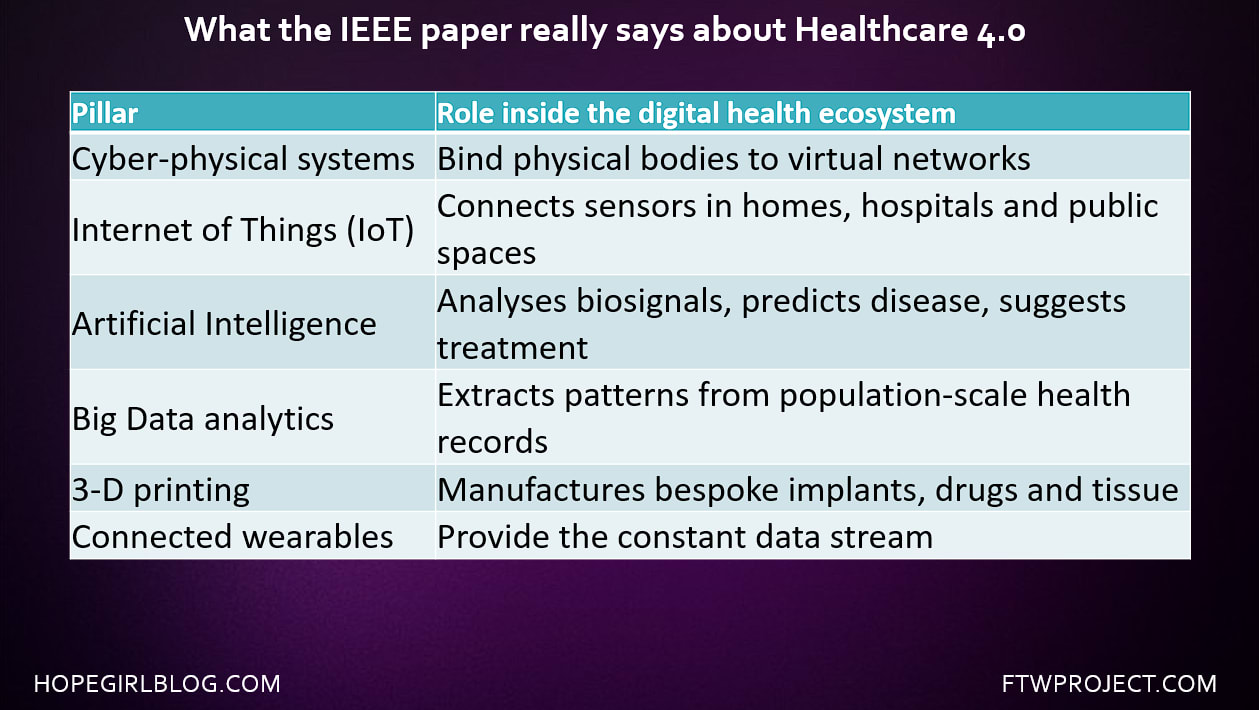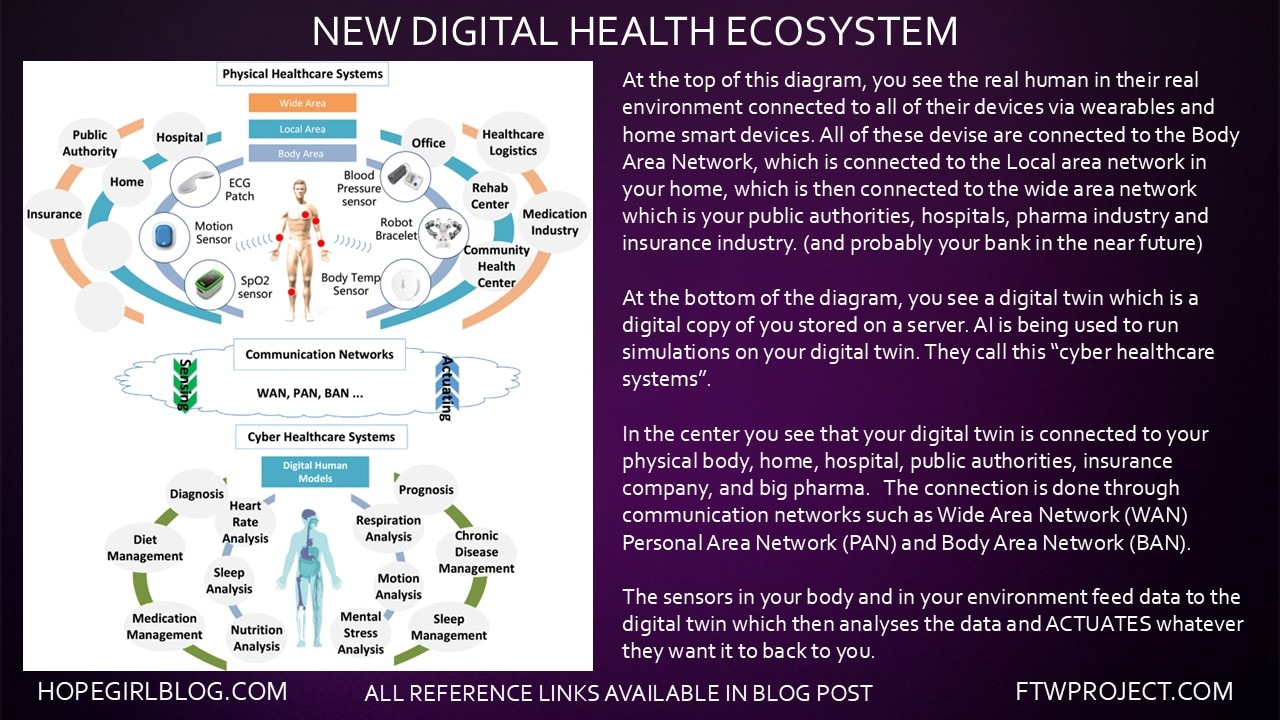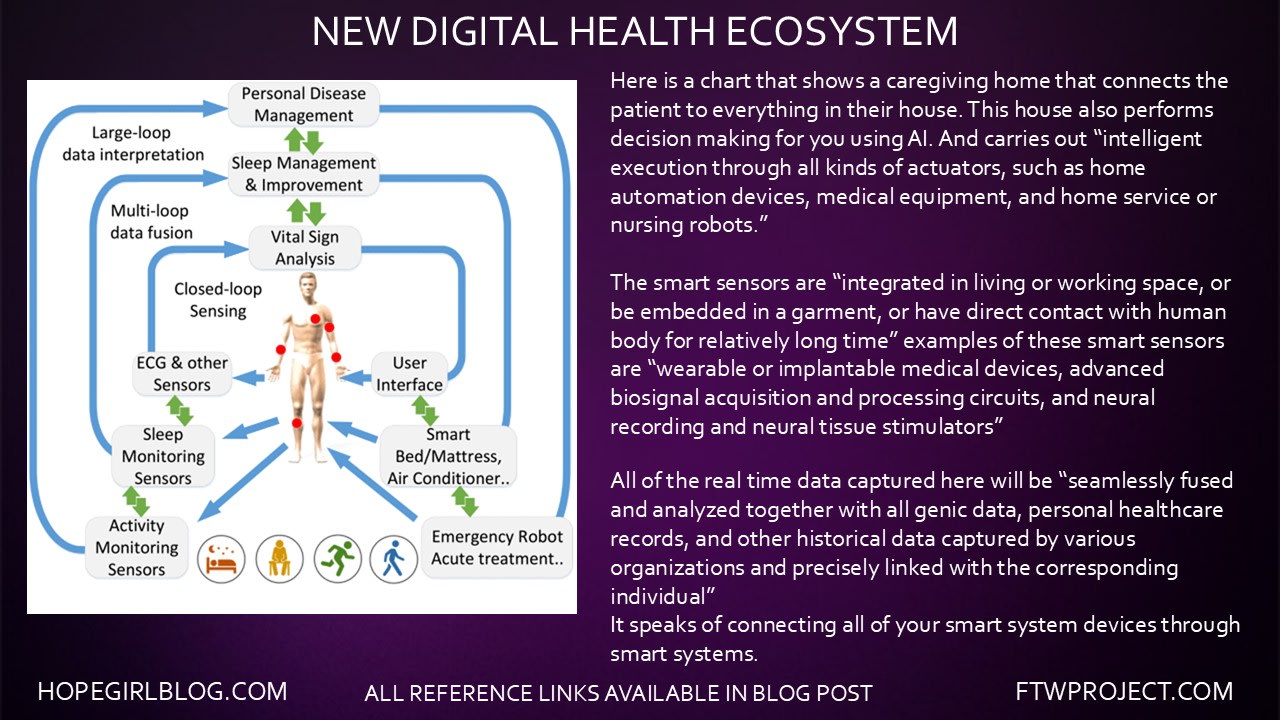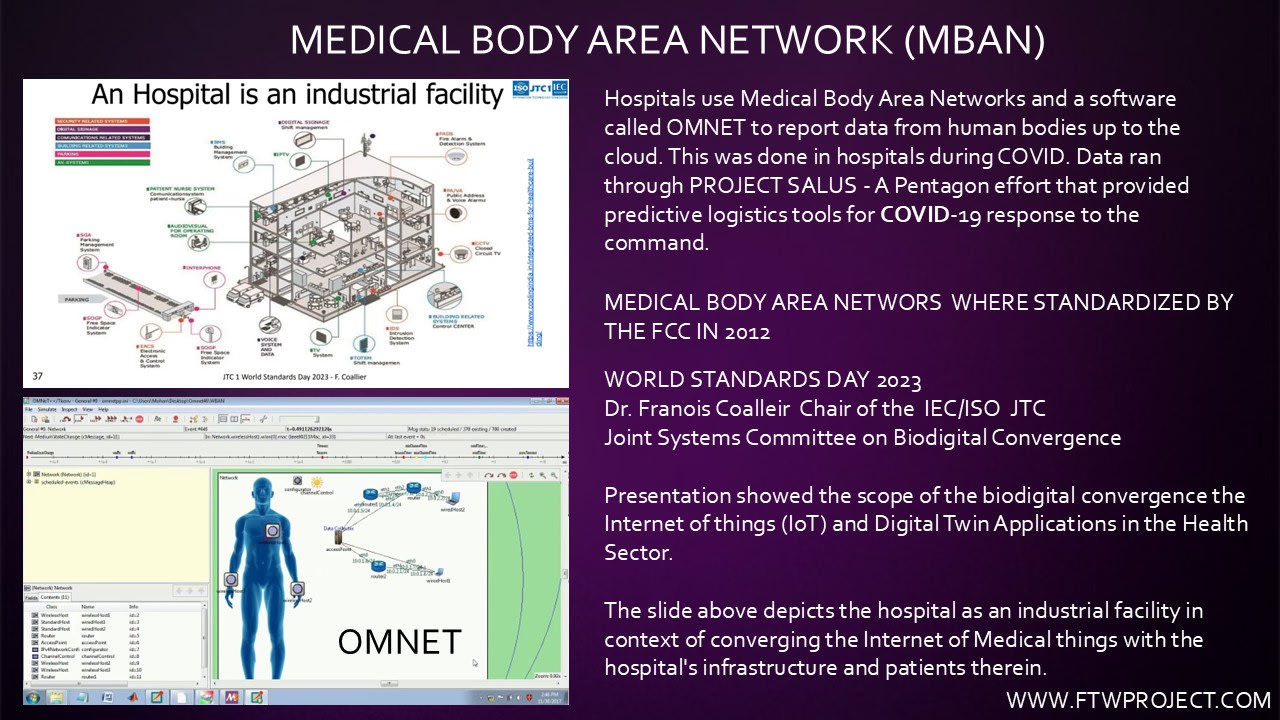The Rise of the Digital Health Ecosystem. How wearables, data centers and virtual twins are redefining Healthcare 4.0

A quiet revolution in plain sight
Over the past few months, the phrase digital health ecosystem has crept into press releases, conference keynotes and policy documents. We are told that this new structure will make check-ups quicker, treatment cheaper and diagnostics sharper. Yet most people still wonder: What exactly is the digital health ecosystem, and why does every tech giant and government department seem to be racing to build it?
This article unpacks the concept, traces its technological building blocks and highlights the opportunities and threats hidden beneath the glossy marketing language.
Watch the presentation here:
Why new data centers are appearing everywhere
Drive through almost any U.S. state and you will notice enormous, window-less warehouses springing up like mushrooms. These facilities are not retail hubs or logistics depots—they are data centers.
Inside, thousands of servers will store and process electronic medical files, insurance records, tax information and, increasingly, the live sensor data produced by wearable gadgets. Without this storage backbone the digital health ecosystem could not exist; vast computational power is the “prerequisite,” as one IEEE paper argues, for Healthcare 4.0 to function.
A vast grab for personal data
Early in 2025, a high-profile Silicon Valley partnership DOGE obtained access to 19 sensitive U.S. Health and Human Services databases. The cache included electronic health records, IRS files, Social Security numbers, addresses and bank details—an unprecedented consolidation of personal information.
Why does this matter to the emerging digital health ecosystem? Because predictive medicine, AI-driven drug discovery and remote patient management all feed on comprehensive, real-time data. The richer the dataset, the more marketable (and profitable) the algorithms built on top of it.
The political push for wearables
Robert F. Kennedy, in his role as Secretary of Health and Human Services, openly stated that he wants “a wearable on every American within four years.” His position is echoed by similar pledges in Europe and Asia.
Wearables—smart watches, rings, patches and even earpieces—act as the edge devices of the digital health ecosystem. They harvest heart rate, temperature, blood-oxygen, movement and sleep metrics, forwarding them through body-area and personal-area networks to those sprawling data centers.
Operation Stargate and the AI pharmaceutical dream
Long before most people heard the term “generative AI,” government-funded programs such as Operation Stargate allocated more than $500 billion to AI-specific data centers. Oracle co-founder Larry Ellison boasted that the new architecture could design an mRNA vaccine “in 48 hours.”
These milestones reveal the deeper aim of the digital health ecosystem: a real-time feedback loop in which sensors feed data to the cloud, AI models simulate outcomes on “digital twins,” and automated factories print customized therapeutics on demand.
What the IEEE paper really says about Healthcare 4.0
A 2018 article in IEEE “INTRODUCTION TO THE SPECIAL SECTION: CONVERGENCE OF AUTOMATION TECHNOLOGY BIOMEDICA ENGINEERING AND HEALTH INFORMATICS TOWARDS THE HEALTHCARE 4.0” spells out the ingredients of Healthcare 4.0:

The paper also stresses that “providers and consumers must work hand-in-hand to ensure adaptability.” Translation: you will be compelled to adopt devices that integrate seamlessly into the wider digital health ecosystem.
Body-area, personal-area and wide-area networks: the new anatomy
Imagine three concentric circles:
- Body-Area Network (BAN) – sensors on or inside your body (smart patches, graphene sensors, neural stimulators, etc.).
- Personal-Area / Local-Area Network (PAN / LAN) – your phone, router and smart appliances at home.
- Wide-Area Network (WAN) – the public internet connecting local authorities, hospitals, insurers, pharmacies and government portals.
Data flows outward from the BAN, through the PAN, into the WAN—and then instructions, alerts or dosage adjustments flow back. This loop is the circulatory system of the digital health ecosystem.


Digital twins – a cloud copy of you
Underneath every data point you generate; a virtual replica is taking shape: your digital twin. Hosted on high-performance servers, the twin absorbs continuous biosignal updates and lets AI run millions of treatment simulations which can then be actuated to your actual physical body.
In diagrams released by European research consortia, arrows show sensor data streaming up to the twin (green) and machine-generated commands streaming back to actuators in the real world (blue). Smart homes, robotic nurses and drug-dispensing wearables execute those commands.
Medical Body-Area Networks inside hospitals
During the COVID-19 emergency, many U.S. hospitals quietly installed Medical BAN platforms compliant with FCC standards first published in 2012. Real-time vitals were pushed (COV WBAN) to a Pentagon project called Salus, demonstrating that institutional adoption of the digital health ecosystem is already well under way.

Biosignals, graphene sensors and “non-invasive” monitoring
Emerging wearables rely on two categories of sensor:
- Invasive – implanted chips, stents or electrodes.
- Non-invasive – skin patches, optical readers, ultrasound and radio backscatter tags.
A popular material choice is graphene. Its conductivity and flexibility make it ideal for stretchable heart monitors, sweat analyzers and neural interfaces. Graphene was one of the components found in the Covid Vaccines injected into billions of people around the world. There are also patents showing that they are putting grapehene in the water supply, and spraying it in the chemtrails. Whether embedded, injected, inhaled or merely stuck to the skin, these graphene devices broadcast unique biosignals that the digital health ecosystem captures and analyses.
The medical industrial complex has been holding conferences internationally for the past 19 years (Biosignals 2026 Spain) to provide biomedical data sets. In the Us, the NIH uses the Electronic Integrated Disease Surveillance System

How they do it
Bioinformatics and computational biology are interdisciplinary fields that use tools and methods to analyze biological datasets. The biological datasets come from the HHS.
Physiological signal based security uses the vital signals of the human body that is collected during health monitoring operations to provide usable security to Body Area Networks. Body Area Networks are cyber-physical systems which interact with the human body by using sensors to collect, process and communicate health data (vital signals, temperature, pressure) from the person.
Physionet.org which was established in 1999 by the NIH is a database that collects and shares recorded and biomedical signals. (Shares your biomedical signals with whom? That is the REAL question!)
Molecular communication (IEEE ) is how they harvest the physiological data sets from your body. Physiological signals are biosignals, which emit from your body naturally, and are continually measured and monitored originating from living organisms.
Europe’s Virtual Human Twin initiative
The European Commission is funding EDITH CSA, a program tasked with “building the European Virtual Human Twin.” The promotional video shows a patient entering a GP’s office where a holographic avatar—fed by that patient’s historical and real-time data—guides therapy choices.
Stakeholders talk about “an atmosphere of trust,” yet admit that ethical and legal challenges loom large: data ownership, liability, consent and the potential misuse of digital twins remain unresolved.
Risks and ethical red flags
- Privacy erosion – health, tax, genomic and lifestyle data stored under one roof is a magnet for hackers and corrupt insiders such as big brother government.
- Algorithmic bias – inaccurate or skewed data fed into the system could misinform treatment, insurance premiums or legal judgements.
- Remote manipulation – wireless actuators directly linked to the cells of your body can be hijacked, potentially endangering or even killing patients.
- Loss of autonomy – if predictive models deem a behavior “high-risk,” insurers or employers may penalize users who refuse certain wearables.
- Medical industrial monopoly – redefining hospitals as “industrial facilities” turns patients into data-rich products, not people.
How to navigate the digital health ecosystem safely
The ecosystem is coming whether we like it or not, but individuals can still adopt protective habits:
- Minimal data diet – only share what is legally required; opt out of unnecessary monitoring programs.
- Local health networks – build relationships with trusted physicians or holistic practitioners before an emergency strikes.
- EMF hygiene – distance routers, disable unused Bluetooth devices and consider proven shielding or scattering products.
- Detox & lifestyle – reduce heavy-metal exposure, prioritize exercise, whole-food nutrition and stress management.
- Stay informed – track legislation on digital IDs, health data portability and wearable mandates.
Informed consent in the age of Healthcare 4.0
The digital health ecosystem promises personalized medicine, instant diagnostics and even 3-D-printed cures. Yet the same infrastructure can enable unprecedented surveillance and control. Understanding how data centers, wearables, biosensors and digital twins interlock is the first step toward exercising informed consent.
Technology is not destiny. Citizens, clinicians and regulators still have time to demand transparency, security and genuine choice as Healthcare 4.0 unfolds.
Awareness today is the best prescription for a healthier, freer tomorrow.
Source Links:
BIODIGITAL CONVERGENCE STANDARDIZATION OPPORTUNITIES IEC
https://www.iec.ch/basecamp/bio-digital-convergence-standardization-opportunities
JTC WORLD STANDARDS DAY IOT AND DIGITAL TWINS IN HEALTHCARE
https://www.worldstandardsday.org/contents/posts/events/2022/jtc-1-world-standards-day-2023.html
INTRODUCTION TO THE SPECIAL SECTION: CONVERGENCE OF AUTOMATION TECHNOLOGY BIOMEDICA ENGINEERING AND HEALTH INFORMATICS TOWARDS THE HEALTHCARE 4.0
https://ieeexplore.ieee.org/document/8421122
National Electronic Disease Surveillance System (NEDSS): a standards-based approach to connect public health and clinical medicine
https://pubmed.ncbi.nlm.nih.gov/11713753/#:~:text=Abstract,and%20quality%20of%20information%20provided
“Moving forward with molecular communication: from theory to human health applications [point of view]”, 09 May 2019 Ian F. Akyildiz; Massimiliano Pierobon; Sasitharan Balasubramaniam
https://www.semanticscholar.org/paper/Moving-Forward-With-Molecular-Communication%3A-From-Akyildiz-Pierobon/48fa5da49119be6428c2842498d4e7cabdc32614
Physionet
https://physionet.org/
BIOSIGNALS CONFERENCE 2026
https://biosignals.scitevents.org/
ECOSYSTEM FOR DIGITAL TWINS IN HEALTHCARE EDITH EU
https://www.edith-csa.eu/
PROJECT SALUS
https://www.galp.in/work/project-salus#:~:text=Background,150+%20hours%20of%20research%20sessions.
COV WBAN
https://pubmed.ncbi.nlm.nih.gov/33680703/
DOGE
https://www.wired.com/story/doge-data-access-hhs/
RFK AND WEARABLES
TRUMP ANNOUNCES NEW HEALTH ECOSYSTEM
PROJECT STARGATE ANNOUNCEMENT DATACENTERS AND LARRY ELLIS MRNA VACCINES
Health Technology Ecosystem RFI
A VISION FOR THE FUTURE HHS.GOV
The post The Rise of the Digital Health Ecosystem. How wearables, data centers and virtual twins are redefining Healthcare 4.0 appeared first on HopeGirl Blog.
Source: https://www.hopegirlblog.com/2025/08/31/the-rise-of-the-digital-health-ecosystem-how-wearables-data-centers-and-virtual-twins-are-redefining-healthcare-4-0/
Anyone can join.
Anyone can contribute.
Anyone can become informed about their world.
"United We Stand" Click Here To Create Your Personal Citizen Journalist Account Today, Be Sure To Invite Your Friends.
Before It’s News® is a community of individuals who report on what’s going on around them, from all around the world. Anyone can join. Anyone can contribute. Anyone can become informed about their world. "United We Stand" Click Here To Create Your Personal Citizen Journalist Account Today, Be Sure To Invite Your Friends.
LION'S MANE PRODUCT
Try Our Lion’s Mane WHOLE MIND Nootropic Blend 60 Capsules
Mushrooms are having a moment. One fabulous fungus in particular, lion’s mane, may help improve memory, depression and anxiety symptoms. They are also an excellent source of nutrients that show promise as a therapy for dementia, and other neurodegenerative diseases. If you’re living with anxiety or depression, you may be curious about all the therapy options out there — including the natural ones.Our Lion’s Mane WHOLE MIND Nootropic Blend has been formulated to utilize the potency of Lion’s mane but also include the benefits of four other Highly Beneficial Mushrooms. Synergistically, they work together to Build your health through improving cognitive function and immunity regardless of your age. Our Nootropic not only improves your Cognitive Function and Activates your Immune System, but it benefits growth of Essential Gut Flora, further enhancing your Vitality.
Our Formula includes: Lion’s Mane Mushrooms which Increase Brain Power through nerve growth, lessen anxiety, reduce depression, and improve concentration. Its an excellent adaptogen, promotes sleep and improves immunity. Shiitake Mushrooms which Fight cancer cells and infectious disease, boost the immune system, promotes brain function, and serves as a source of B vitamins. Maitake Mushrooms which regulate blood sugar levels of diabetics, reduce hypertension and boosts the immune system. Reishi Mushrooms which Fight inflammation, liver disease, fatigue, tumor growth and cancer. They Improve skin disorders and soothes digestive problems, stomach ulcers and leaky gut syndrome. Chaga Mushrooms which have anti-aging effects, boost immune function, improve stamina and athletic performance, even act as a natural aphrodisiac, fighting diabetes and improving liver function. Try Our Lion’s Mane WHOLE MIND Nootropic Blend 60 Capsules Today. Be 100% Satisfied or Receive a Full Money Back Guarantee. Order Yours Today by Following This Link.






